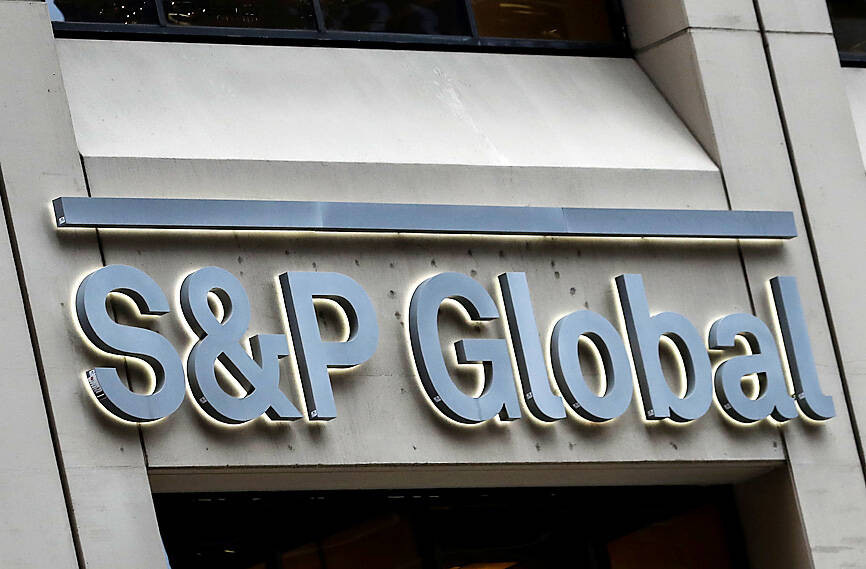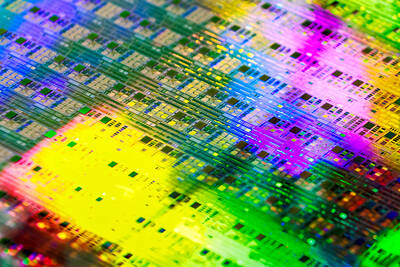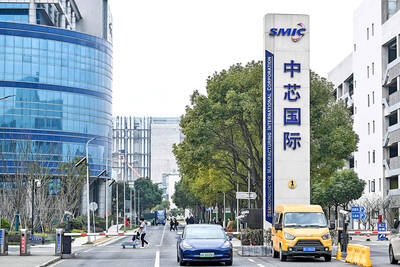The S&P Global Taiwan Manufacturing Purchasing Managers’ Index (PMI) was 51.5 last month, up from January’s 51.1, remaining in expansion territory for the 11th consecutive month, as demand for electronics picked up in the US and Europe, the international market intelligence service provider said yesterday.
The latest data suggested an improvement in Taiwanese manufacturers’ operations on the back of faster sales, production and inventory growth, S&P Global said, citing a monthly survey of local companies.
“Taiwan’s manufacturing sector was revitalized in February, posting faster increases in crucial barometers such as production, output, purchasing and inventories,” S&P Global Market Intelligence principal economist Joe Hayes wrote in a statement.

Photo: Reuters
Taken in tandem with a pickup in business confidence, the latest PMI survey results portray a positive near-term outlook, Hayes said.
PMI data aim to capture the pulse of the manufacturing industry, with values of 50 and higher indicating expansion, while values below the threshold suggesting contraction.
Sales growth was solid overall and slightly more robust than in January, thanks to rising demand from domestic and international customers, S&P Global said.
The uptick in new orders was particularly noticeable with customers in Europe and the US, it said.
Consequently, productivity displayed better momentum and output was higher, S&P Global said, adding that firms purchased additional inputs and stockpiled resources in response to greater business needs.
That explained why buying activity rose markedly, leading to a fourth consecutive month of expansion in preproduction stocks, it said.
Some companies showed eagerness to obtain materials ahead of anticipated sales, it added.
However, manufacturers in Taiwan reported a fractional drop in their workforces, which firms attributed to difficulty in filling positions.
In turn, backlogs of work rose for 10 months running and capacity pressures built up, S&P Global said.
Challenges filling vacancies had persisted for six consecutive months and cut across the industry, Hayes said.
That firms are struggling to recruit might restrict the strength of any upturn, he said.
Paradoxically, production growth would have further roadway if orders were to taper off, given current backlogs, which have risen for the past 10 months, Hayes said.
Looking ahead, Taiwanese manufacturers are optimistic of higher production levels over the next 12 months and the degree of optimism is the greatest since June last year, S&P Global said.
Bullish sentiment reflected positive demand projections, as Taiwan is home to the world’s major suppliers of critical electronic components used in artificial intelligence products, smartphones and notebook computers, it said.

NO BREAKTHROUGH? More substantial ‘deliverables,’ such as tariff reductions, would likely be saved for a meeting between Trump and Xi later this year, a trade expert said China launched two probes targeting the US semiconductor sector on Saturday ahead of talks between the two nations in Spain this week on trade, national security and the ownership of social media platform TikTok. China’s Ministry of Commerce announced an anti-dumping investigation into certain analog integrated circuits (ICs) imported from the US. The investigation is to target some commodity interface ICs and gate driver ICs, which are commonly made by US companies such as Texas Instruments Inc and ON Semiconductor Corp. The ministry also announced an anti-discrimination probe into US measures against China’s chip sector. US measures such as export curbs and tariffs

The US on Friday penalized two Chinese firms that acquired US chipmaking equipment for China’s top chipmaker, Semiconductor Manufacturing International Corp (SMIC, 中芯國際), including them among 32 entities that were added to the US Department of Commerce’s restricted trade list, a US government posting showed. Twenty-three of the 32 are in China. GMC Semiconductor Technology (Wuxi) Co (吉姆西半導體科技) and Jicun Semiconductor Technology (Shanghai) Co (吉存半導體科技) were placed on the list, formally known as the Entity List, for acquiring equipment for SMIC Northern Integrated Circuit Manufacturing (Beijing) Corp (中芯北方積體電路) and Semiconductor Manufacturing International (Beijing) Corp (中芯北京), the US Federal Register posting said. The

India’s ban of online money-based games could drive addicts to unregulated apps and offshore platforms that pose new financial and social risks, fantasy-sports gaming experts say. Indian Prime Minister Narendra Modi’s government banned real-money online games late last month, citing financial losses and addiction, leading to a shutdown of many apps offering paid fantasy cricket, rummy and poker games. “Many will move to offshore platforms, because of the addictive nature — they will find alternate means to get that dopamine hit,” said Viren Hemrajani, a Mumbai-based fantasy cricket analyst. “It [also] leads to fraud and scams, because everything is now

MORTGAGE WORRIES: About 34% of respondents to a survey said they would approach multiple lenders to pay for a home, while 29.2% said they would ask family for help New housing projects in Taiwan’s six special municipalities, as well as Hsinchu city and county, are projected to total NT$710.65 billion (US$23.61 billion) in the upcoming fall sales season, a record 30 percent decrease from a year earlier, as tighter mortgage rules prompt developers to pull back, property listing platform 591.com (591新建案) said yesterday. The number of projects has also fallen to 312, a more than 20 percent decrease year-on-year, underscoring weakening sentiment and momentum amid lingering policy and financing headwinds. New Taipei City and Taoyuan bucked the downturn in project value, while Taipei, Hsinchu city and county, Taichung, Tainan and Kaohsiung